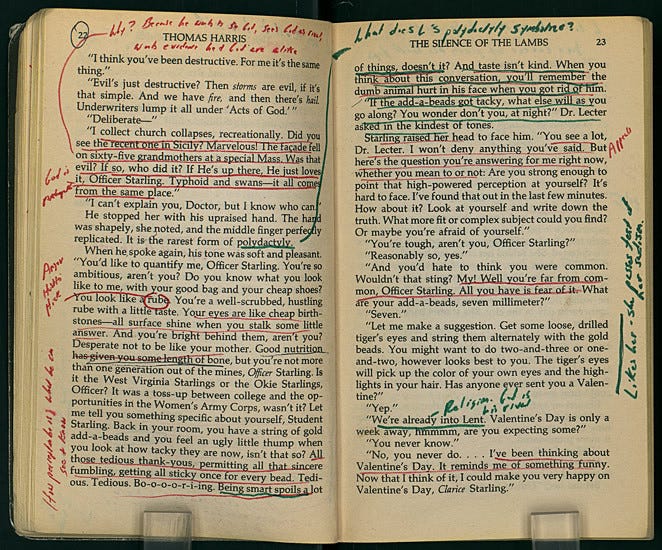I always enjoy chatting with other readers about that niche topic of marginalia: “Marks made in the margins of a book or other document. They may be scribbles, comments, critiques, doodles, drolleries, or illuminations.”
When reading paper books that I own, I almost always read with a Sharpie pen in hand. I underline the sentences that stick out, the ideas that grab me, the paragraphs that resonate in my soul. Sometimes I’ll write a note in the margins, but that’s somewhat rare. After I’ve finished the book, I’ll transcribe all those passages into a Google Doc.
When reading paper library books, I take a picture of the lines that stand out and use the unbelievably handy image-to-text feature on my iPhone to copy the words right into a Google Doc. It works spectacularly.
When reading books on my Kindle, I use the highlight feature liberally and then, you guessed it, copy and paste those into a Google Doc.
My Google Doc library is filled with hundreds of documents for the books I’ve taken notes on. They come in remarkably handy when writing reviews, comparing titles, and working out ideas.
I could go into more detail, but I’d rather hear from you! Do you take notes when you’re reading? Do you write in your books?


I make buying used books a priority not because they’re less expensive but on the off chance that I get to see the impact the author had on someone else as I read along. To give back, I give my marked-up copies to someone else so they see the impact it had on me. It’s one of the (many) reasons I don’t listen to audiobooks: you can interact with sound waves in the same way.
No matter the genre, I annotate every book that I read. My reason is simple: The more senses you engage, the more likely you are to retain something you perceive/take in (reading out loud is a bride too far, however). And yet, “I cannot remember the books I've read any more than the meals I have eaten; even so, they have made me.”